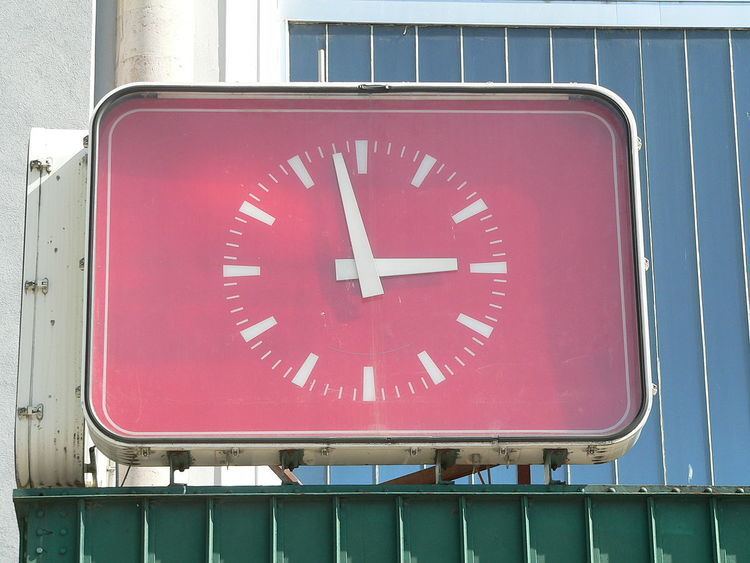 | ||
The Symmetry minute is a significant time point in the clock face timetables used by many public transport operators. At this point in time a train in a clock-face timetable meets its counterpart travelling in the opposite direction on the same line. By keeping this crossing time constant across a network, connecting times between lines are kept consistent in both directions.
In principle, a train-encounter can be set at any time. However, at the transition between two networks or lines, in turn, be able to create a symmetrical connection relation, one puts expediently uniform symmetry minutes fixed. In conjunction with the long-distance cycle systems of ÖBB and SBB, the Forschungsgesellschaft für Straßen- und Verkehrswesen für Deutschland (Research Association for Roads and Traffic for Germany) recommends this the minute 58 so that in four-minute minimum connecting a departure for minute 0 results. Meanwhile, the symmetry minute 58½ has in most railways in Central Europe and a number of other transport operators established, thus the departure minute 0 results from three-minute hold time. According to the symmetry, this results for shorter cycles in more symmetry minutes, which are shifted by half the cycle time. So at hourly trips the minute 28½, at 30-minute clocking the minutes 58½, 13½, 28½ and 43½ etc.
The following table is a simple reading of the departure time the opposite direction for hourly cycles. By far the most commonly encountered symmetry minute in Central Europe is used here. For shorter cycles the other departure times can be calculated on the basis of it. In the last line the clockings are given to the respective meeting times.
